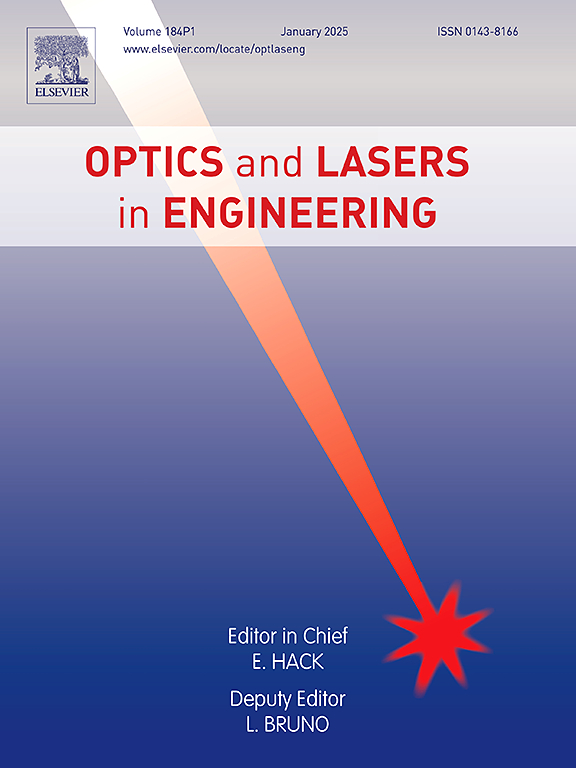一种基于偏振失调码融合相移编码的高动态范围目标三维测量方法
IF 3.5
2区 工程技术
Q2 OPTICS
引用次数: 0
摘要
结构光三维测量技术广泛应用于各个领域。然而,在高动态范围(high dynamic range, HDR)表面物体的测量中,传统方法往往会因高光区域的反射干扰而产生测量误差,并且需要多种投影模式才能完成三维重建,降低了效率。针对这些问题,本文提出了一种极化失调码融合相移(PFPS)方法,旨在提高HDR表面目标的测量精度和重建效率。该方法利用光的偏振状态编码信息,实现更稳定的相位展开,并利用偏振特性巧妙地融合相移条纹图和灰度编码条纹图。实验结果表明,PFPS方法在有环境光干扰的环境中表现较好,可以有效地重建具有复杂几何形状的物体。与传统方法相比,PFPS不仅提高了精度,而且提高了约56%的效率,仅需要四个投影模式即可完成完整的3D重建。该方法为测量HDR对象提供了一种高效可靠的解决方案。本文章由计算机程序翻译,如有差异,请以英文原文为准。
An efficient 3D measurement method for high dynamic range objects based on polarization misaligned code fusion phase-shift encoding
Structured light 3D measurement technology is widely applied in various fields. However, in the measurement of high dynamic range (HDR) surface objects, traditional approaches often encounter measurement errors due to reflective interference in highlight regions, and require multiple projection patterns to complete 3D reconstruction, reducing efficiency. To address these issues, this paper presents a polarization misaligned code fusion phase-shift (PFPS) approach, aimed at improving the measurement accuracy and reconstruction efficiency for HDR surface objects. This approach uses the polarization state of light for encoding information to achieve more stable phase unwrapping and leverages polarization characteristics to cleverly fuse phase-shift fringe patterns with gray-code fringe patterns. The results of the experiment demonstrate that the PFPS approach performs better in environments with ambient light interference and can effectively reconstruct objects with complex geometries. Compared with traditional approaches, PFPS not only offers improved precision but also boosts efficiency by approximately 56 %, requiring only four projected patterns for complete 3D reconstruction. This approach provides a highly effective and dependable solution for measuring HDR objects.
求助全文
通过发布文献求助,成功后即可免费获取论文全文。
去求助
来源期刊

Optics and Lasers in Engineering
工程技术-光学
CiteScore
8.90
自引率
8.70%
发文量
384
审稿时长
42 days
期刊介绍:
Optics and Lasers in Engineering aims at providing an international forum for the interchange of information on the development of optical techniques and laser technology in engineering. Emphasis is placed on contributions targeted at the practical use of methods and devices, the development and enhancement of solutions and new theoretical concepts for experimental methods.
Optics and Lasers in Engineering reflects the main areas in which optical methods are being used and developed for an engineering environment. Manuscripts should offer clear evidence of novelty and significance. Papers focusing on parameter optimization or computational issues are not suitable. Similarly, papers focussed on an application rather than the optical method fall outside the journal''s scope. The scope of the journal is defined to include the following:
-Optical Metrology-
Optical Methods for 3D visualization and virtual engineering-
Optical Techniques for Microsystems-
Imaging, Microscopy and Adaptive Optics-
Computational Imaging-
Laser methods in manufacturing-
Integrated optical and photonic sensors-
Optics and Photonics in Life Science-
Hyperspectral and spectroscopic methods-
Infrared and Terahertz techniques
 求助内容:
求助内容: 应助结果提醒方式:
应助结果提醒方式:


